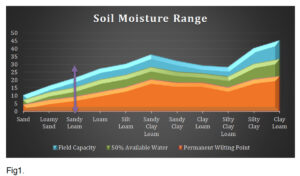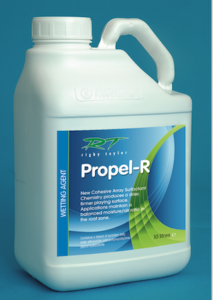Getting the balance right
Related Articles
A successful balance between the moisture needs of turf and the requirements of the surface on which a sport is played is the interaction of the soil and its structure and the ever-changing issues affecting water management.
When water is applied to turf, either by rain or from irrigation, it is only available and therefore effective if it is able to penetrate the soil surface and through into the rootzone. Water left on the surface will be either lost due to run-off or from evaporation.
Once the water arrives in the rootzone, it will fill up empty pore spaces and then move downwards through the macropores, eventually leaving them drained from the force of gravity and become refilled with air / oxygen. The micropores however will retain their water content against the force of gravity because of the bonding and cohesive nature of water.
Micropores vary in size. The larger ones are able to apply a weak hold on the water against the pull of gravity but not enough to resist the ‘pull-force’ of the roots to extract water from them. The smaller micropores however can hold onto water much more tightly and resist water being extracted by the roots.
Moisture availability in the soil
Following heavy rainfall, pore spaces will become filled and the soil becomes saturated with water. Depending on soil type, this may represent 60 percent of the total soil volume. There are several states of moisture capacity in a soil and these can be described in three ways:
Field capacity: Drainage has removed the water from the macropores, but all the micropores have retained their water volume.
Permanent wilting point: Root-available water has been removed from the micropores and all that is left is water, tightly bound, and no longer accessible by the plant roots. At this point the plant will start to wilt and growth will be affected.
Available water: The amount of water between field capacity and permanent wilting point. It is the aim of greenkeepers and grounds managers to ensure an optimal level of water in the root zone is achieved between these two points; typically at 50 percent of available water.
Root depth significance on plant available moisture
The depth of roots in a sward will significantly affect the amount of water available to the plant and consequently the irrigation intervals necessary to maintain a growing plant.
For example: If your root zone was described as a sandy loam with 22 percent field capacity and a permanent wilt point at eight percent (water volume) and you wish to maintain a manageable water volume around 17 percent, that would be nine percent volume above the permanent wilt point. Every square metre to a depth of 10cm would contain nine litres of available moisture for the roots. Typically, in summer, a square metre of a full sward can transpire between three and four litres of water per day, which would mean there would be sufficient water for a maximum of just over three days before wilting occurs. If the roots extended to a depth of 20cms, then there would be 18 litres of plant available water, doubling the amount of days before wilting occurs. In reality, as the amount of available moisture decreases the plant will reduce its uptake and thereby extend the point at which the permanent wilting point is reached. At this point of reduced water consumption however, the turf plant’s metabolism will have been reduced, together with its ability to maintain a healthy growth pattern.
How much water is in soil
Water holding capacity is largely dependent on soil type. As mentioned above, clay soils will hold greater amounts of water than sand soils as they have significantly more micropores to hold water. Conversely the number of macropores in a sand root zone allows gravity to take away much more water. However, the important measurement in both cases is the ‘available water’. Sand may allow much more water to drain away than clay soils but it also does not have so many of the small micropores that inhibit its uptake by roots.
Moisture / air balance
Dry conditions and soil compaction can lead to major problems as roots that are denied essential moisture and air will not be able to support surface growth and grass regeneration.
Such conditions encourage the incidence of Dry Patch where the soil beneath the surface can become snuff-dry. In such situations, a suitable action programme to encourage re-moistening needs to be implemented as the problems can remain throughout the year. However, it’s not just the re-wetting of the soil that is important under such conditions, it is essential that the roots gain access to the available moisture to provide a stimulus for early recovery.
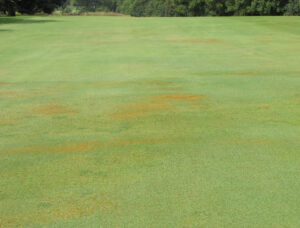
Dry Patch: Once Dry Patch gets a hold, re-wetting the soil is very difficult to achieve, particularly during the summer months. Water ‘beads-off’ these patches, just as it does a waxy surface
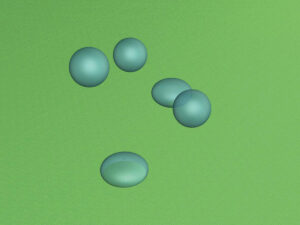
Water ‘beads’ on the surface and either runs off or evaporates. To re-moisten the soil it is essential to ensure applied water penetrates the surface, and gravitates down through the ground and into the rootzone where it can have a beneficial effect
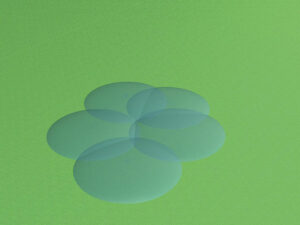
Incorporating a wetting agent into the water management programme reduces surface tension and increases the ability of water penetrating the turf surface
When turf is severely affected by Dry Patch, the rooting of the grass can be significantly restricted. Plants with shallow and poorly developed roots are very susceptible to drought and will wilt and eventually die. Propel-R keeps moisture in the tiny spaces between the sand and soil particles and encourages the plant to produce fine root hairs that can utilise the available moisture and thus minimise the effects of drought stress.
Such action ensures an improved utilisation of irrigation programmes and reduces the need for hand watering as it allows water to penetrate the soil surface and move vertically and horizontally within the soil profile, thus providing a superb prevention and control of Dry Patch.
When applying any wetting agent, as with many other treatments, prevention is better than cure and, if a green has shown signs such as those described, there is much to be gained from continuing its use well into the autumn as though there may be some superficial recovery of Dry Patch, unless the water-repellent character of the soil is completely changed, then the turf will deteriorate again the following summer. Any such programme should be tied in with routine aeration.
Soil water repellency – MED values
Propel-R in a seven months trial was compared with the industry standard wetting agent and also untreated plots to study the response times of water entering the rootzone and an on-going maintenance of an MED (Molarity of Ethanol Droplet) value below the critical 1.0 level. Note: 0 = no hydrophobicity and 4 = extreme hydrophobicity.
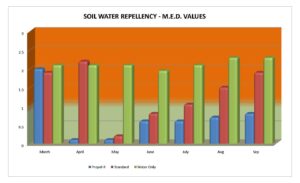
Propel-R (shown in blue) provided the greatest benefit in the speed of response and the length of time MED values were kept below the critical 1.0 level
Four things to consider regarding moisture availability and wetting agent applications
1. Type of turf. Fine turf (greens / tees / fairways / pitches and so on) will comprise different grass species, each having variable evapotranspiration rates, and in diverse growing situations, have different root penetration and levels of water availability.
2. Soil structure. Knowing the characteristics of the root zone is vital to understand its ability to store, and more importantly deliver, water to the plant.
3. Climatic changes. Recording and being aware of arriving weather patterns are important so as to be prepared for periods of ‘drought’ before the soil becomes critically affected by having insufficient available moisture.
4. Root Depth. Regular core sampling will help to assess frequency and quantity of applied irrigation and will assist in determining the type of wetting agent required.
For more information visit www.rigbytaylor.com or contact an area representative.

